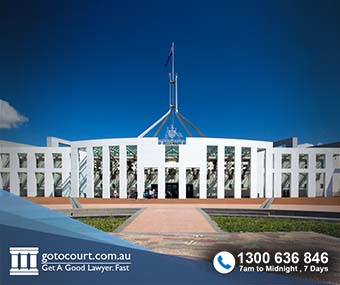Call our lawyers
now
or,
have our lawyers
call you
Refugees in Australia
Updated on May 08, 2018 • 6 min read • 278 views • Copy Link
Refugees in Australia
Refugees are persons who are outside their country of origin and who are unable to return due to a well-founded fear of persecution on the basis of any of the following grounds:
- Religion;
- Race;
- Nationality;
- Political opinion;
- Membership of a particular social group;
The definition of a refugee is contained in the Refugees Convention 1951, which was signed by 144 countries in response to the events of the Second World War and the refusal of many countries to take in Jewish refugees escaping the Holocaust.
A refugee is not the same as a displaced person or a person fleeing generalised violence or unrest, although these terms are often (and erroneously) used interchangeably. Persons fleeing generalised violence, poverty, climate change or other circumstances that fall outside of persecution on proscribed grounds will generally not be successful in obtaining refugee status and must seek to obtain some other category of visa.
What does the Refugees Convention say?
The Refugee Convention sets out the rights of refugees and the obligations of signature countries towards refugees. The core principle of the Refugees Convention is that of ‘non-refoulment.’ (Article 33). Non-refoulment is the principle that a refugee should not be returned to a country where they have a well-founded fear of being seriously harmed. The Convention also makes it clear that refugees should not be penalised for illegal entry or stay in a country in which they are seeking asylum (Article 31). Under the Convention, refugees must abide by the laws of the contracting states and states must provide refugees with various forms of assistance, such as free access to courts and administrative assistance.
Compliance with the convention is supervised by the United Nations High Commissioner for Refugees (UNHCR) but the UNHCR cannot enforce the Convention. Countries that violate the Convention receive verbal condemnation from the UN and other countries.
Refugees in Australia
Australia signed the Refugee Convention in 1954 and began developing its onshore refugee system after the arrival of the first boat people in the late 1970s. During the 1990s, the number of people seeking asylum grew rapidly and since that time refugees have become a contentious political issue in Australia. Many changes have been made to the refugee determination process in attempts to deal with the changing situation and in response to public pressure to ‘stop the boats’.
In 2015-2016 Australia accepted 15,555 refugees in total. The majority of these refugees were resettled through the UN, while a minority were onshore applicants and special humanitarian entrants.
Onshore applications for protection
Asylum seekers who arrive in Australia with a valid visa and then apply for protection are assessed through the refugee status determination and complementary protection system. The Department of Home Affairs (formerly the Department of Immigration and Border Protection) makes a preliminary assessment of the person’s claim for refugee status. If the person is found not to meet the criteria for a refugee, but to nonetheless be in danger of serious harm such as torture, they may be offered protection under the complementary protections scheme. If the person receives a negative assessment, they can apply to the Refugee Review Tribunal for review of this decision and in some case for judicial review through the courts.
Unlawful maritime arrivals
Since 2012, asylum seekers who arrive in Australia by boat without a valid visa have been transferred to a third country for processing in that country. In practise, this has meant that these people are sent to Nauru or Manus Island and held in the processing centres in those locations. Processing in these countries is very slow, with asylum seekers commonly spending four or five years in detention before receiving a determination. The Australian government has resolved that none of these applicants will be settled in Australia should they be successful in obtaining a Protection Visa. There are plans to resettle them in other countries, including the United States and New Zealand. However, efforts to resettle asylum seekers from Nauru and Manus Inland are moving slowly and many people who have already been found to be genuine refugees still remain in the processing centres.
Criticisms of the refugee system
The mandatory detention of asylum seekers in Australia has received widespread condemnation, including from the UN, which has found Australia to be in breach of the Refugees Convention and other human rights instruments. There is public pressure within Australia for asylum seekers to be processed in the community to avoid lengthy and expensive detention in onshore and offshore centres. Indefinite detention has also been found to have a devastating impact on the physical and mental health of detainees and has been condemned by the Australian Medical Association.
Numerous constitutional challenges to the legality of immigration detention by the Australian government have been mounted, with mixed results. In 2004, the High Court found that the indefinite detention of asylum seekers was constitutionally valid as such detention was of an administrative and not a punitive nature. In 2014, the constitutionality of the detention of asylum seekers on Manus Island was challenged in the Australian High Court. The High Court found that the detention was valid under the Australian constitution.
In 2016, the Supreme Court of Papua New Guinea found that the detention of asylum seekers on Manus Island was unconstitutional as it breached the men’s constitutional right to freedom of movement under the Papua New Guinean constitution. As a consequence of this decision, asylum seekers were transferred into an alternative processing facility in which their movement is not restricted. A class action was initiated by the men who had been held in the previous centre, suing the Australian government for false imprisonment. This case is still awaiting a decision.
The Refugees Convention is often criticised for being unsuitable to the modern-day refugee situation. There have been calls for Australia to withdraw from the Convention as an instrument based on outdated Cold-War era concepts. Conversely, there have been isolated calls for the refugee system to be reviewed and updated with the realities of modern immigration patterns in mind. So far there has been no serious push to overhaul the refugee system.
If you require advice or assistance with an immigration law matter, please contact Go To Court Lawyers.

Affordable Lawyers
Our Go To Court Lawyers will assist you in all areas of law. We specialise in providing legal advice urgently – at the time when you need it most. If you need a lawyer right now, today, we can help you – no matter where you are in Australia.How It Works











1. You speak directly to a lawyer
When you call the Go To Court Legal Hotline, you will be connected directly to a lawyer, every time.


2. Get your legal situation assessed
We determine the best way forward in your legal matter, free of charge. If you want to go ahead and book a face-to-face appointment, we will connect you with a specialist in your local area.


3. We arrange everything as needed
If you want to go ahead and book a fact-to-face appointment, we will connect you with a specialist in your local area no matter where you are and even at very short notice.












